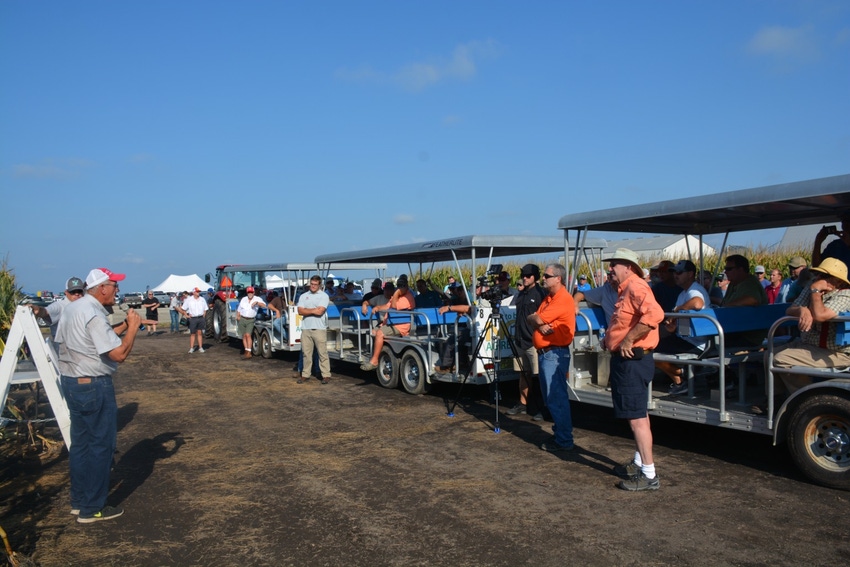
Dr. Ron Heiniger encourages farmers to manage row spacing and plant population to account for higher temperatures as corn develops.
“I want you to remember 86 degrees Fahrenheit. That’s the stage where corn stops its development. It slows down its rate of growth. 95 degrees Fahrenheit is the point at which corn goes backwards. It’s taking more energy to respire and push water through that plant to keep it cool than the plant is fixing in photosynthesis,” said the North Carolina State University Extension corn specialist at the Blacklands Farm Managers Tour in Fairfield, N.C.
“I want you to remember 86 degrees Fahrenheit. That’s the stage where corn stops its development. It slows down it’s rate of growth. 95 degrees Fahrenheit is the point at which corn goes backwards. It’s taking more energy to respire and push water through that plant to keep it cool than the plant is fixing in photosynthesis,” Heiniger said at the Blacklands Farm Managers Tour at the Coastal Carolina Gin in Fairfield, N.C.
“110 degrees Fahrenheit: That’s the temperature where leaves turn brown. That’s where cell death starts to occur. Some of our corn turned brown in late June and early July because the canopy temperature reached 110 degrees Fahrenheit and cooked those cells,” Heiniger said.
Heiniger pointed out that the air temperature never reached 110 degrees Fahrenheit for that period, but the temperature at the surface of the leaves did reach 110 degrees Fahrenheit and caused damage. He said there were three times this year when temperatures reached 110 degrees Fahrenheit at the surface of the leaves: Late June, early July and mid-July.
In Fairfield, Heiniger and his team are examining canopy temperatures under different plant populations and row spacing to determine what is best for developing corn plants to better tolerate heat. They are evaluating four different plant populations from 26,000 to 44,000 and looking at row spacings of 20-inches to 36-inches.
“We can do something about high temperatures. We just don’t plant that many plants. The more area that plant has for gaining water, the longer it can keep water through the plant, the cooler the canopy stays. We have to be more careful about these plant populations in these high temperatures,” Heiniger says.
What surprised Heiniger in the research so far is that 20-inch row spacing didn’t appear to cause stress to the plant during the high heat of the summer as the corn developed. “I thought because of the 20-inch spacing where we were crowding these rows we wouldn’t get enough wind flow. I thought we were building vapor densities in those canopies which was reducing transpiration. Turns out that doesn’t look to be true or at least not in the test so far,” Heiniger said.
The research shows that on July 4 the canopy temperature barely got above 90 degrees in 20-inch rows at a plant population of 38,000. With 36-inch row spacing, the canopy temperature reached 105 degrees.
“It’s all about water. The more water you can make available to get through that plant, the cooler the leaf surface is going to be and the better off you are going to be under high temperatures,” Heiniger said.
The 20-inch rows were spaced out a little bit wider, so the plants had a little more water to work with which helped keep the canopy cooler during the hot period, according to Heiniger.
Finally, Heiniger does see benefits to strip-tillage and keeping residue on the field to help the roots of the corn plant get more water. “Anything we can do to enhance water in that soil enhances our ability to tolerate temperature,” he said.
About the Author(s)
You May Also Like






